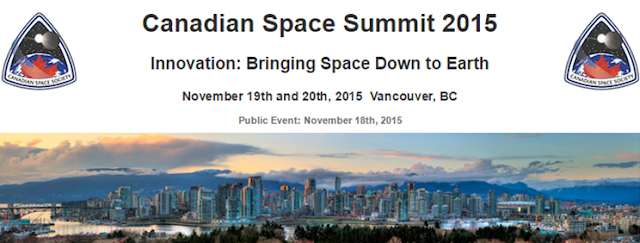By Brian Orlotti
On September 28th, ASTROSAT, India's first orbiting space observatory, was launched from the Satish Dhawan Space Centre in Sriharikota, India. Canada is a key participant in the mission, with Canadian-developed sensors on ASTROSAT itself as well as a Canadian nano-satellite hitching a ride on the rocket as a secondary payload.
A project of the Indian Space Research Organization (ISRO), the 1,550kg ASTROSAT is the world's first satellite capable of studying the universe in multiple wavelengths of light (x-ray, ultraviolet, and visible) simultaneously.
Canada's contribution to ASTROSAT consists of the UltraViolet Imaging Telescope (UVIT), a group of three imagers (2 ultraviolet and one visible light). UVIT will play a key role in ASTROSAT's work since ultraviolet light (along with x-ray light) is the primary wavelength in which exotic astronomical objects such as black holes, neutron stars and quasars can be observed.
The contribution will entitle Canadian scientists to observation time on the satellite, allowing Canadian astronomers to conduct unique research. The UVIT is funded by the Canadian Space Agency (CSA) with in-kind support from the National Research Council of Canada (NRC).
UVIT was developed as a collaboration between the CSA and astronomer Dr. John Hutchings of the NRC. UVIT's prime contractor is Cambridge, Ontario based COM DEV International.
The second Canadian connection is the exactView-9 (Ev9), a nano-satellite that was carried onboard the same rocket as ASTROSAT as a secondary payload. Ev9 is a sea vessel monitoring nano-satellite operated by Cambridge, Ontario based exactEarth Ltd. and built by the University of Toronto Institute for Aerospace Studies (UTIAS) Space Flight Laboratory (SFL), in Toronto, Ontario.
Ev9 is the newest member of the company's exactView global ship monitoring constellation, which currently consists of 7 polar-orbiting and one equatorial orbiting satellite (Ev9). Ev9 orbits around the equator every 97 minutes providing expanded and detailed coverage to the busy tropical shipping regions of the world.
On September 28th, ASTROSAT, India's first orbiting space observatory, was launched from the Satish Dhawan Space Centre in Sriharikota, India. Canada is a key participant in the mission, with Canadian-developed sensors on ASTROSAT itself as well as a Canadian nano-satellite hitching a ride on the rocket as a secondary payload.
 |
| The Astrosat launch on September 28th. Video c/o DD News. |
A project of the Indian Space Research Organization (ISRO), the 1,550kg ASTROSAT is the world's first satellite capable of studying the universe in multiple wavelengths of light (x-ray, ultraviolet, and visible) simultaneously.
Canada's contribution to ASTROSAT consists of the UltraViolet Imaging Telescope (UVIT), a group of three imagers (2 ultraviolet and one visible light). UVIT will play a key role in ASTROSAT's work since ultraviolet light (along with x-ray light) is the primary wavelength in which exotic astronomical objects such as black holes, neutron stars and quasars can be observed.
The contribution will entitle Canadian scientists to observation time on the satellite, allowing Canadian astronomers to conduct unique research. The UVIT is funded by the Canadian Space Agency (CSA) with in-kind support from the National Research Council of Canada (NRC).
UVIT was developed as a collaboration between the CSA and astronomer Dr. John Hutchings of the NRC. UVIT's prime contractor is Cambridge, Ontario based COM DEV International.
 |
| A video overview of the ASTROSAT mission. Screenshot an video c/o ISRO. |
The second Canadian connection is the exactView-9 (Ev9), a nano-satellite that was carried onboard the same rocket as ASTROSAT as a secondary payload. Ev9 is a sea vessel monitoring nano-satellite operated by Cambridge, Ontario based exactEarth Ltd. and built by the University of Toronto Institute for Aerospace Studies (UTIAS) Space Flight Laboratory (SFL), in Toronto, Ontario.
Ev9 is the newest member of the company's exactView global ship monitoring constellation, which currently consists of 7 polar-orbiting and one equatorial orbiting satellite (Ev9). Ev9 orbits around the equator every 97 minutes providing expanded and detailed coverage to the busy tropical shipping regions of the world.
 |
| Brian Orlotti. |
The launch of ASTROSAT highlights Canada's continuing skill at building the tools that help humans understand both our universe and our own planet.
______________________________________________________________
Brian Orlotti is a network operations centre analyst at Shomi, a Canadian provider of on-demand internet streaming media and a regular contributor to the Commercial Space blog.








































